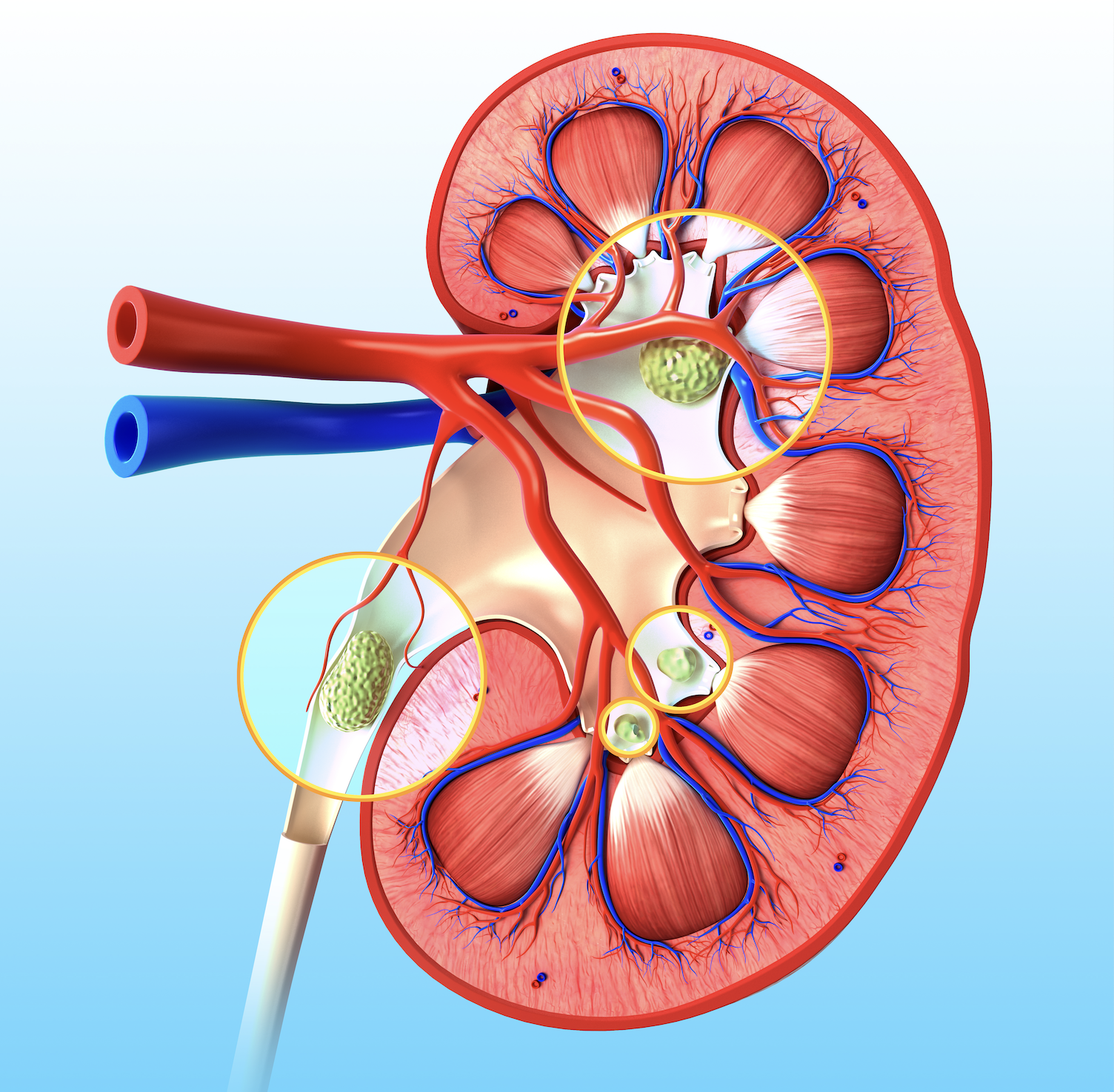Many of us have known someone who has had or at least heard the horror
stories of having kidney stones. They can cause pain that has been compared to childbirth. According to Keck Medicine of USC, more than 1 in 10 people will have a kidney stone at some point in their lives. So, if you ever find yourself in this most unfortunate of situations, here is what you need to know!
What Are They?
Kidney stones are solid objects that form in the kidneys due to minerals in urine. The minerals form crystals that build and grow to make stones. Some kidney stones are small enough to be completely unnoticeable, however others can get large enough to block the flow of urine, causing a world of pain.
Types of Kidney Stones
1. Calcium Oxalate: Accounting for 80% of kidney stones, this is the most common type and forms when there is too much calcium in the urine.
2. Uric Acid: (5-10%) These form as a result of the urine being too acidic.
3. Struvite: (10%) These stones are less common and are formed as a result of urinary tract infections.
4.Cystine: (<1%) The rarest form of kidney stones formed when there are high amounts of cystine in the urine. These stones tend to be genetic.
Signs and Symptoms
The signs are hard to miss. They tend to occur suddenly and are known for coming in waves. Someone with kidney stones may experience:
- Severe pain in either side of the lower back
- Nausea and/or vomiting
- Abnormal urine that may be cloudy or bloody or may have an odd smell
- Fever and chills
- Abdominal pain
Possible Causes and Risk Factors
Each type of kidney stone is linked to a particular set of causes. The most common reasons for people to develop kidney stones are:
- Drinking too much or too little water
- Diet (eating too much protein or too muchsalt or sugar)
- Family history
- Obesity
- Weight loss surgery
- Certain medical conditions
Treatments
The treatment for kidney stones depends on the size and type of stone. One of the most common options is to try to let the stones pass without surgery. Doctors may prescribe medicine to help with the pain or make the urine less acidic. Surgery may be necessary for stones that cause infection or block the flow of urine. Other types of treatments include breaking the stones down into smaller pieces with Shock Wave Lithotripsy (SWL), grabbing the stones by inserting a ureteroscope up the ureter and into the kidney during a Ureteroscopy (URS) or conducting a Percutaneous Nephrolithotomy (PCNL) which requires a small incision in the lower back to break down and vacuum out the stones.
Related Articles:

